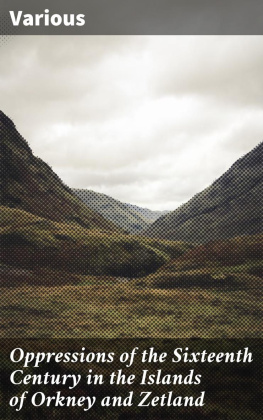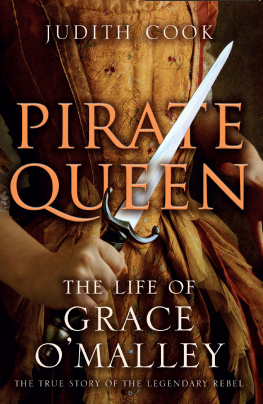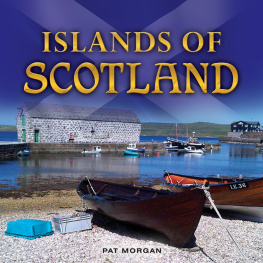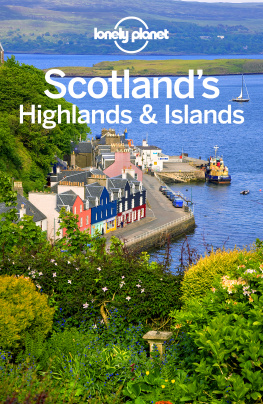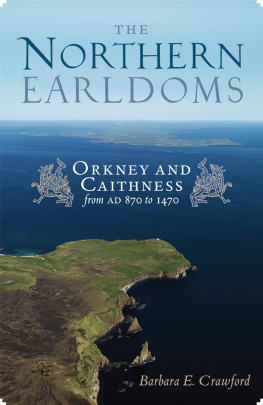

THE PIRATE QUEEN: IN SEARCH OF GRACE OMALLEY AND OTHER LEGENDARY WOMEN OF THE SEA
Text 2004 by Barbara Sjoholm
Maps 2004 by Avalon Publishing Group
Some photos and illustrations are used by permission and are the property of the original copyright owners.
Published by Seal Press
A member of the Perseus Books Group
1700 Fourth Street
Berkeley, CA 9 4710
All rights reserved. No part of this book may be reproduced or transmitted in any form without written permission from the publisher, except by reviewers who may quote brief excerpts in connection with a review.
Portions of this book appeared in The North American Review, Spring 2003 (The Lonely Voyage of Betty Mouat), and in A Woman Alone: Travel Tales from Around the Globe, Seal Press, 2001 (Halibut Woman).
Cataloging-in-Publication data has been applied for.
ISBN-13: 978-1-58005-605-2
9 8 7 6 5
Designed by PDBD
Cartographer: Suzanne Service
Distributed by Publishers Group West
To my mother
in memoriam
Im going to be a pirate when I grow up, she cried. Are you?
Astrid Lindgren, Pippi Longstocking
CONTENTS

LIST OF ILLUSTRATIONS
LIST OF MAPS


O NE AFTERNOON in May I found myself in the stern of the Very Likely, a motor launch ferrying me and four other passengers across Clew Bay on the west coast of Ireland. We were bound for Clare Island, where the sea captain, clan chieftain, and pirate Grace OMalley had lived in the sixteenth century. Born in 1530, Grace grew up to become a rover, a raider, and such a scourge to the English that her name appears regularly in Elizabethan state papers. This was a notorious woman in all the costes of Ireland, wrote Sir Henry Sidney in 1583. Another English governor, Lord Justice Drury, called her a woman that hath impudently passed the part of womanhood and been a great spoiler and chief commander and director of thieves and murderers at sea. Queen Elizabeth put a price of five hundred pounds on her head.
The inner reaches of Clew Bay are riddled with hidden reefs and rocks, dotted with hummocks and holms, those small islands that are sometimes exposed and sometimes submerged. Its currents are fierce; any invading force would think twice about trying to navigate it. Grace OMalley knew it like the back of her hand. She grew up on its shores and for years made Clare Island, just outside the entrance to Clew Bay, her stronghold and base for raiding the coast.
Her pirate galleys and the English ships that pursued them are long gone, but ferries and launches make the crossing several times a day from Roonagh Pier, on the mainland. Id just arrived in Ireland from Seattle, and was now on the first of what would be many voyages around the North Atlantic in search of the stories, lost, forgotten or otherwise misplaced, of seafaring women like Grace. It was a brisk, sunny day, and the midday light winked up from the choppy waves like tiny mirrors on an Indian bedspread patterned in aqua and dark green.
An elderly, tweed-capped gentleman called Paddy leaned over the railing of the Very Likely. The seagulls keened in swoops above, the whitened green water boiled under us, and Paddy clung in misery to my arm. From the small cabin forward his wife called anxiously, Paddy, if you feel the urge, remember to hold on to your teeth, will you now?
He nodded weakly in her direction and confided to me, Im not a good sailor. Are you?
Yes, except for the very worst weather. The short voyage of the Very Likely across the island-flung channel was a heart-leaping, wave-skidding pleasure to me.
Youre a seafaring woman then? Paddy asked.
Aye, matey! I wanted to say, though kayaking around Lake Union in Seattle and off the rocky coastlines of the Pacific Northwest wasnt exactly like commanding a pirate galley in the North Atlantic. But Id always loved the ocean, whether I was in it or on it. Id grown up in Southern California swimming in the ocean, and though I never had a boat, I did have a surfboard. More importantly, Id always dreamed of ships and the sea. Long Beach was a port city, filled with sailors, tattoo parlors, and blood banks. Our next-door neighbor was a longshoreman; school field trips were to the harbor to watch the cargo being hoisted on and off the ships. Growing up, I liked to read about cabin boys on clipper ships and was much taken by the adventures of Pippi Longstocking, whose father had been a sea captain before he became a cannibal king, and who dreamed of becoming a pirate herself.
Id first become interested in Grace OMalley the year before, while on a writers residency in another sea-smashed landscape, Cape Cornwall in England. Passing through London, Id picked up a book on women pirates. Bold in Her Breeches, edited by British writer Jo Stanley, had a whole chapter on Grace, and it was this pirate who most captured my imagination, for everything she was, and everything she wasnt. Commanding vessels at sea and a fighting force of two hundred men, engaging in piracy and swordplay, looting, destroying, murderingthe captain of a pirate ship must be, hands down, the most transgressive role to which a woman could ever aspire. Dirty, greedy, sensual, tough, and charismatic; a gambler, a wife, and a mother; a leader of men, a politician when necessary, Grace comes down to us as that rare woman who claimed freedom as her birthright. For to go to sea is to feel that ordinary boundaries cannot hold you; to be a pirate is to assert that whatever you fancy belongs to you. The boldness of Graces adventurous life long past youth was something that appealed to me particularly; she had, after all, remained a pirate into her seventies.
Grace OMalley was only one among many pirates in Bold in Her Breeches. Jo Stanley had collected material on women as disparate as Alfhild, a Viking princess who commanded a fleet of longships for battle and piracy, the Chinese pirate Cheng I Sao, and Mary Read and Anne Bonny, who plied the trade in the Caribbean in the 1700s. It was Grace OMalley who interested me most, however, and not just because she was a pirate, but because she was, from all accounts, a great seafarer, and stories of women and the sea were sparse. After reading Anne Chamberss biography,
Next page

